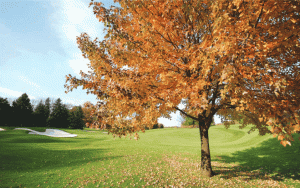 Rhythm is an often overlooked aspect to the golf swing. Since the invention of the camcorder, teachers have been enamored with positions in the swing. They want their students to be in certain positions at certain times, all in an effort to get the ball to finish somewhere near its intended target. But today, savvy teachers know that there is more to the swing than just positions. They realize that the overall movement is important, and that good rhythm is very much a part of that.
Rhythm is an often overlooked aspect to the golf swing. Since the invention of the camcorder, teachers have been enamored with positions in the swing. They want their students to be in certain positions at certain times, all in an effort to get the ball to finish somewhere near its intended target. But today, savvy teachers know that there is more to the swing than just positions. They realize that the overall movement is important, and that good rhythm is very much a part of that.
It’s not just the golf swing where rhythm is important. There is a certain rhythm playing the game that is completely different than practice. There are also certain rhythms playing the game present one day that are different than other days. Indeed, an individual round of golf might feature several rhythms.
In playing vs. practice, it is important that our students somewhat simulate the rhythm of playing as much as they can when they practice. This might include hitting one shot with one club, putting the club back into the bag, drawing out another and playing another shot. To better simulate the rhythm of the course, going through the same pre-shot routine used on the course is of paramount importance. It doesn’t have to be used for every shot, but it should be used often enough so that when the player gets on the course, it doesn’t feel like such a foreign experience in terms of rhythm.
The rhythm of a round might be dramatically changed, too. For example, a group of golfers may be sailing along without delay until they run into a logjam of players up ahead, drastically slowing their progress. This can lead to a change in play, often for the worse. However, it can be no less damaging to be playing slowly when the group ahead suddenly decides it’s time to let your group through. Players often rush their routines in an effort to be courteous to the yielding group, but most of the time they’re only saving a couple of seconds. Although, those couple of seconds seem like the routine is cut in half, and the result is usually a poor one. And playing out the round with the newfound “freedom” of not having to wait can mean taking several holes to once again find a comfortable rhythm.
Teaching has its own rhythm, as well. There are days when things seem to flow and our students are progressing well. Other days, it seems we just cannot find the rhythm of our teaching, and we struggle with our message, our presentation, our quality of instruction. Perhaps it’s best to slow down when we find ourselves in this position and take some time to simplify our approach. You might think this malady would affect only new teachers, as they are still trying to find their footing, but experienced teachers have their off days, too.
Those of us who run a golf course or who work in the pro shop will find that a workday will often have several rhythms, and very rarely will there be a consistent rhythm throughout the day. There might be an early-morning rush, followed by a lull, followed by a consistent flow of players after lunch, tailing off again until the after-work crowd appears. There might be unexpected problems cropping up which divert our attention.
Think about all the aspects of golf besides playing, teaching and running a golf course. There are equipment manufacturers who need to be keenly aware of the rhythm of the golf marketplace. Retail golf stores have a rhythm all their own, as do the employees who work there. Tournament administrators find that running a competition has ebbs and flows of rhythm.
Rhythm may be one of the most important aspects of not only golf, but life. Those who are best able to recognize these rhythms and are able to “go with the flow” usually find the most success and contentment.
Copyright © 2023 United States Golf Teachers Federation, All Rights Reserved
200 S. Indian River Drive, Suite #206, Fort Pierce, FL 34950
772-88-USGTF or 772-595-6490 - www.usgtf.com
200 S. Indian River Drive, Suite #206, Fort Pierce, FL 34950
772-88-USGTF or 772-595-6490 - www.usgtf.com
